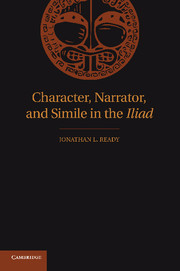Book contents
- Frontmatter
- Contents
- Acknowledgments
- Introduction
- 1 The Simile and the Homeric Comparative Spectrum
- 2 Similes and Likenesses in the Character-Text
- 3 A Preparation for Reading Sequences of Similes
- 4 Sequences of Similes in the Character-Text
- 5 Narrator, Character, and Simile
- 6 Similes in the Narrator-Text
- Conclusion: The Odyssey Compared
- Abbreviations
- Bibliography
- Index Locorum
- Index of Names, Subjects, and Greek Words
- References
Bibliography
Published online by Cambridge University Press: 03 May 2011
- Frontmatter
- Contents
- Acknowledgments
- Introduction
- 1 The Simile and the Homeric Comparative Spectrum
- 2 Similes and Likenesses in the Character-Text
- 3 A Preparation for Reading Sequences of Similes
- 4 Sequences of Similes in the Character-Text
- 5 Narrator, Character, and Simile
- 6 Similes in the Narrator-Text
- Conclusion: The Odyssey Compared
- Abbreviations
- Bibliography
- Index Locorum
- Index of Names, Subjects, and Greek Words
- References
- Type
- Chapter
- Information
- Character, Narrator, and Simile in the Iliad , pp. 275 - 296Publisher: Cambridge University PressPrint publication year: 2011



